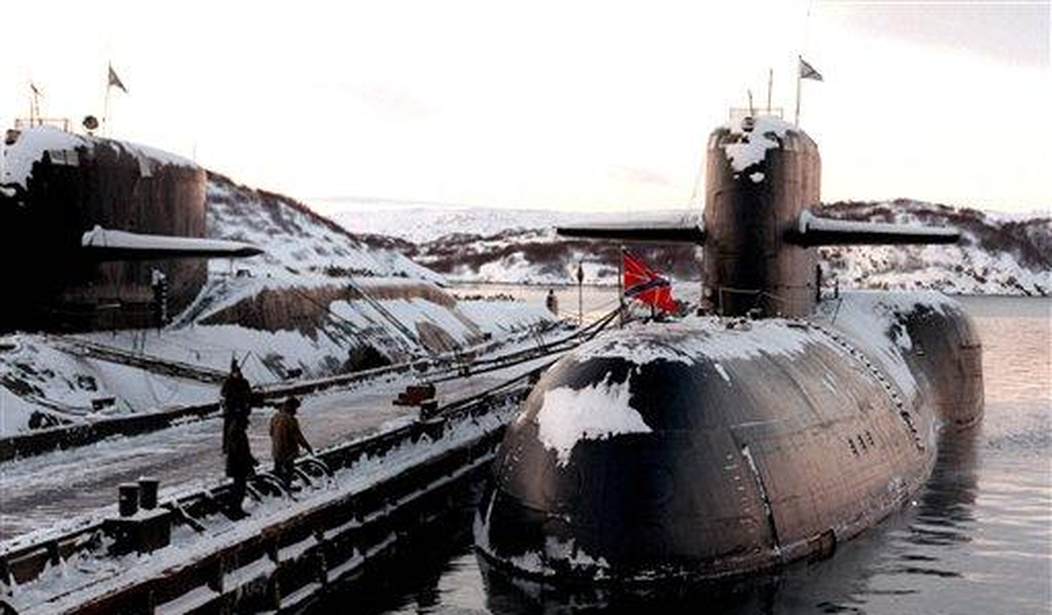The Washington Post published a deep dive on how one particular Russian brigade has fared during the invasion of Ukraine. The 200th brigade was considered one of Russia’s best. It’s home was the Russian Kola Peninsula in the far north where Russian submarines and nuclear missiles are stored. At the start of the war the 200th was made up of around 1,400 men. By summer it had been reduced to about half of that number and today there’s basically nothing left, at least not as an effective fighting force.
The decline of the 200th started in January when they were put on trains for a 1200 mile journey south to the border with Ukraine where they were told they’d be taking part in drills.
The troops, like others in the invading force, were led to believe they were deploying to take part in drills, according to Ukrainian officials citing accounts of captured 200th soldiers. Only at 3 a.m. on Feb. 24 were they told, “There will be shooting,” an official said.
A convoy of about 100 brigade vehicles began streaming across the border that morning. Photos taken by civilians show one of the unit’s tanks being used to set up a roadblock on the northern outskirts of Kharkiv — an attempt to impose order that soon proved futile.
By day’s end, multiple units of the 200th had been ambushed or attacked, dozens of soldiers killed or wounded, and equipment including tanks and “Grad” mobile rocket launchers destroyed or abandoned on roadsides, according to Ukrainian and Western accounts…
The punishment inflicted on the 200th in those early battles and dozens more that followed remain a point of martial pride for senior Ukrainian officers. “What’s there to know about them?” Col. Gen. Oleksandr Syrsky, who later commanded the Kharkiv offensive, said recently in an interview when asked about the 200th. “They run away very well.”
The exact losses of those early battles are unknown but back home at their base, Russian officials announced that just 3 soldiers had been killed. What we do know is that by May, after retreating back across the Russia border, documents say there were 892 men left, which means about 500 men had been killed. Even among the remaining 892 not all were ready or willing to fight. Twenty one were listed as hospitalized and nine as “refuseniks.”
One of the soldiers injured in the early months of fighting was Col. Denis Kurilo, the brigade commander. He sustained a serious head injury when his vehicle was blown up and eventually wound up in a Russian hospital for more than six weeks.
Meanwhile, by the end of May, the remains of the 200th plus whatever reinforcements they could find crossed back into Ukraine to rejoin the fight. At first Ukrainian soldiers on the other side of the front lines noticed a sudden improvement in the professionalism and accuracy of the troops they were facing. Then the Ukrainians decided to try something different.
After a series of inconclusive exchanges, Shevchenko said, he convinced Ukrainian artillery units to hold their fire for several days, hoping to create the impression they were low on ammunition as quadcopter drones were used to get a clearer fix on Russian positions.
Amid the lull, surveillance images showed 200th troops letting down their guard.
“Nothing was attacking them, so they could safely sunbathe,” Shevchenko said. “They took outdoor showers. They were running around without body armor, without helmets.”
Ukrainian forces took advantage by unleashing a 40-minute barrage involving mortars, tanks and Soviet-era artillery pieces, then launched a follow-on attack the next day after nightfall.
“They didn’t know where to run,” Shevchenko said. After the village was liberated, he said, he spoke with residents who estimated that about 100 Russian troops had died as a result of the two-day engagement, though there are no official numbers. He said the strikes dismantled vehicles that could have evacuated the wounded. “The locals said that many died during the night,” Shevchenko said. “They just bled to death, because those who were injured — they couldn’t evacuate them.”
Whatever was left of the 200th after that disaster was part of the force which retreated from Kharkiv during the Ukrainian offensive in September. Ukranian Col. Pavlo Fedosenko who was one of the commanders leading that push described what was left.
Most of the unit’s officers had been killed or injured, Fedosenko said, and about 70 percent of its equipment — including about 32 tanks and 100 vehicles — had been destroyed or captured.
“Nothing of that brigade is left,” he said in a recent interview with The Post. “It’s completely wiped out.”
Since then, Russian forces have been reinforced by tens of thousands of poorly trained, poorly equipped mobiks. But many of the soldiers who knew what they were doing, like those in the 200th, are gone.
Update: There were a couple of stories out yesterday saying Putin is planning another big push as soon as it warms up a little.
Senior Ukrainian officials say Vladimir Putin is preparing for a major new offensive in the new year, despite a series of humiliating battlefield setbacks for Russia in recent months.
In an interview with the Guardian, Ukraine’s defence minister, Oleksii Reznikov, said that while Ukraine was now able to successfully defend itself against Russia’s missile attacks targeting key infrastructure, including the energy grid, evidence was emerging that the Kremlin was preparing a broad new offensive…
While Reznikov suggested a new offensive could happen by February, the other senior officials indicated they believed it might come as early as January.
I guess we’ll find out soon what kind of fight Russia’s depleted army can still manage.








Join the conversation as a VIP Member